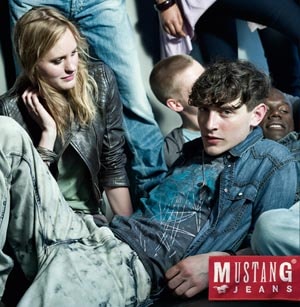photo via: Bizmology
We saw the warnings last year when many companies began to slowly raise the prices of their cotton-made products and overall use less cotton and more synthetic blends. The price of cotton rose almost 80% within last year, caused by the flooding in Pakistan, bad weather in China and India, and the initial low inventory due to a weak demand during the recession.
But last Friday marked a record high of a 150% increase since beginning of 2010, with cotton prices at $1.90 a pound. And reasonably, as many manufacturers switched to cheaper alternatives, prices of polyester and other synthetic fibers also increased.
Come July and August when the new fall 2011 collections hit the sales floors, it is guaranteed that we will see price increases all across the board, no matter the price point. How much of an increase, however, is yet to be determined. Retailers from all levels face the challenge of finding ways to keep their price points competitive, yet understandable to consumers. After the last several years with all down low recession prices, how customers will react to the increases after being so used to the bargain-friendly merchandise is what's on every retailer's mind.
photo via: Fashion United
Denim companies face the biggest obstacle as cotton is their primary raw material. Levi's announced plans to increase prices, while Mustang, a Germany-based supplier of denim-inspired lifestyle fashion, is actively working on a goal-oriented set of measures to manage the additional costs. Besides moderate price increases, the company plans to lay off about 16 of their approximately 600 employees worldwide, affecting mostly the staff working in overhead functions. With rising production prices, retailers must reconsider all facets of their business structure to stay afloat. Other apparel companies that plan to increase prices include V.F. Corporation, J.C. Penney, Nike, and Hanesbrands.
photo via: Treehugger
photo via: Ecouterre
Recycled materials and vintage clothing will naturally gain momentum as both require little to none materials cost. The American swimwear brand, Speedo, recently collaborated with student designers from the London College of Fashion, University College Falmouth, and the University of Huddersfield to rework their surplus of LZR Racer swimsuits. The Speedo LZR Racer was launched in 2008, but due to the 2009 ban preventing swimmers to compete in full-body swimsuits, the company was left with a substantial amount of dead stock. Collaborating with eager and creative students, the final result was a couture twist to the normal swimwear attire. Click here to watch the behind-the-scenes video of the student collaboration.
Just a few days ago, J.Crew's little sister, Madewell also announced their collaboration with fashion blog Refinery29 and presented a curated selection of vintage goods through their "Very Vintage Boutique" on their online shop. With less than 30 pieces, the collection of one-offs is extremely exclusive, affordable, and fashionably on trend. Targeting the twenty-something fashionistas, purchasing vintage finds is made easier than ever.
photo via: Ecouterre
And for those into the military-inspired trend, Christopher Raeburn and Victorinox, the brand behind the Swiss Army Knife, debuted their Fall/Winter 2011 collection last Thursday on the first official day of New York Fashion Week. The eight-piece "Remade in Switzeland" capsule collection is designed solely from decommissioned military uniforms and parachute fabrics. Featuring unisex parkas, coats, hoodies, scarves, and caps sewn by local tailors, only 100 pieces per look were made.
But even beyond socially and environmentally conscious made products, we are also seeing more and more affordable sustainable fabrics made available to the masses. The assumption that eco or socially friendly products is too expensive is losing it's validity as websites like Offset Warehouse and Source4Style allow anyone to order anywhere from a yard to an entire roll of ethical fabrics at a fair price. With more transparency and affordability of ethical fabrics, design students are becoming better educated with what is out there, while smaller designers are enabled to afford greener options. Furthermore, current and future brands will have more meaningful visions as sourcing becomes increasingly important in the retailer's identity.
There is a drastic shift in the way the retail industry is running today. The roles have reversed and power has come to the hands of the producers. The financial crisis led many producers into bankruptcy, resulting in a smaller, more expensive production capacity. The resulting increase in sourcing costs affects all companies in the apparel industry in a way that has never been before. And while some businesses may react by increasing prices or reevaluating their costs, others will see this as a timely occasion to carefully consider alternative, more sustainable possibilities.
















































